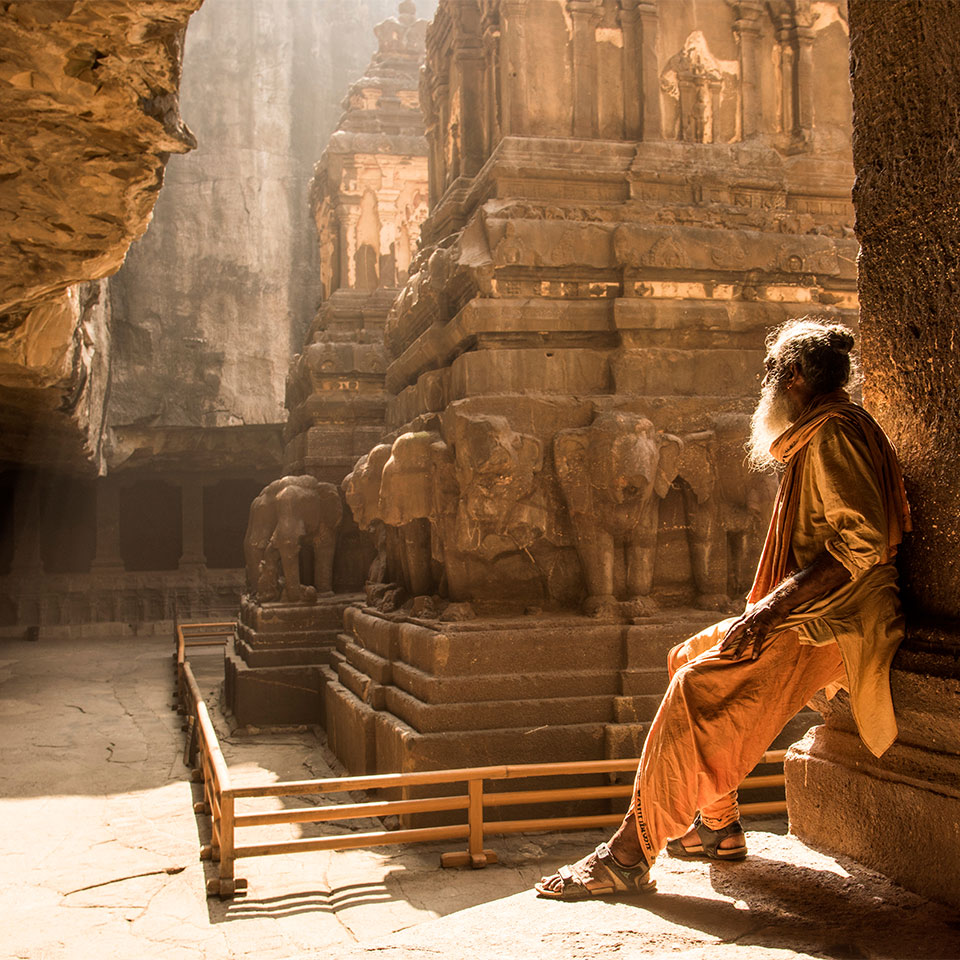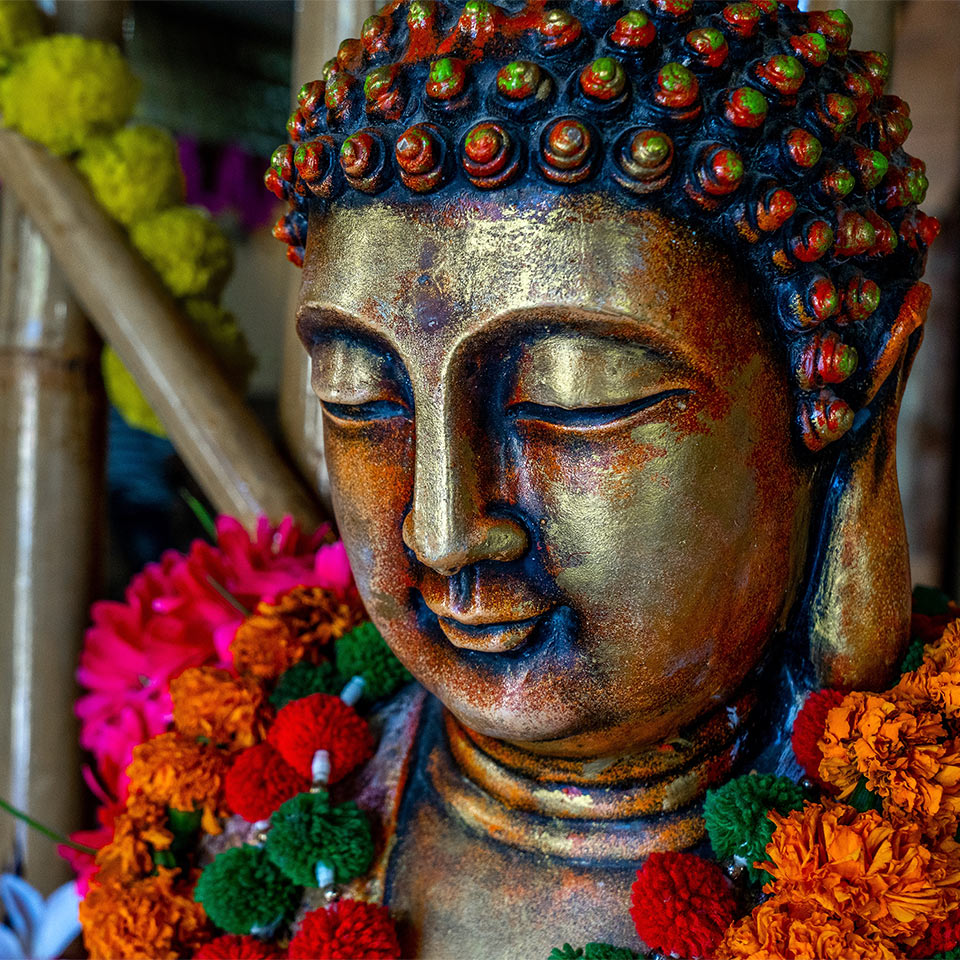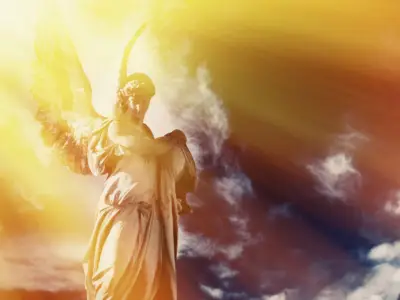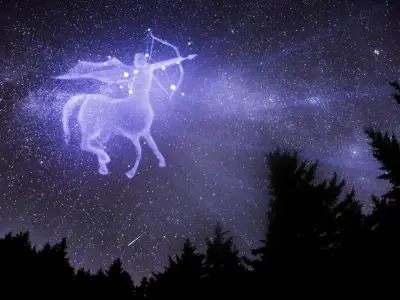India has one of the world’s most ancient civilisations. Over thousands of years, it has seen a multitude of languages, vibrant cultures and religions come and go. In this article, we journey back to the beginnings of India’s ancient history…
Jump to:

Ancient Civilisations of India
Indus Valley - 3300 BC to 1300 BC
The Indus Valley Civilisation was one of the world’s most ancient and mysterious civilisations. It emerged around 3300 BC in the Indus River Valley, in what is now Pakistan and northwest India. Major cities like Mohenjo-Daro and Harappa served as the heart of this civilisation. These cities were famous for meticulously organised street grids, advanced sewage systems, and multi-story buildings.
The Indus Valley people were also very skilled at farming and trade. They grew crops like wheat, barley, and cotton and had trading networks that stretched as far as Mesopotamia in Iraq. When it came to business activities, they had seals made with animal designs but unfortunately, no one has figured out how to read their script yet. This is why so much about their culture and history remains mysterious! These ancient people made beautiful pottery, jewellery, and sculptures with intricate details. The tiny figurines and seals they left behind hint at their beliefs and customs. Some clay statues seem to show gods, so religion may have played a role. Huge public baths, like the "Great Bath," suggest that bathing had ceremonial importance too. Even without understanding the writing, their impressive skills for farming, art, and trade reveal that the Indus Valley people were an advanced, thriving civilisation.
The decline of the Indus Valley Civilisation remains a mystery. Some theories suggest that it was due to ecological changes such as shifts in river courses and possibly invasions or conflicts with other neighbouring cultures. Although the civilisation’s major urban cities were gradually abandoned, the legacy of the Indus Valley Civilisation remains.
Recommended for you!
Best SellersVedic Period - Roots of Hinduism - 1500 BC
The Vedic period marks the arrival of the Indo-Aryans (Indo-European migrants) into the Indian subcontinent around 1500 BC. They brought along a mix of cultural and religious traditions that would go on to shape the foundations of Hinduism.
At the heart of the Vedic period lies the Rigveda - this is an ancient collection of hymns and prayers that provide glimpses into the spiritual practices, cosmology, and values of the early Vedic society. These were composed between 1500 BC and 1200 BC and are among the oldest religious texts in the world. Deities such as Indra, Agni, and Varuna were worshipped as part of the Rigveda with fire sacrifices and rituals, and these hymns were chanted during these ceremonies.
Over time, during the Later Vedic Period (c. 900 BC to 600 BC), important developments started to take place. Society became more complex with the rise of new kingdoms and states. The religious landscape also expanded, leading to the creation of texts known as the Brahmanas and the Upanishads. The Brahmanas provided instructions for Vedic rituals, while the Upanishads delved into the metaphysical and philosophical questions, exploring concepts like Brahman (universal consciousness) and Atman (individual soul). It was this transitional phase that marked the beginnings of Hinduism as we know it today.
Mauryan Empire - Rise of Buddhism - 322 BC
The Mauryan Empire represents a significant chapter in India’s ancient history. It spanned approximately 322 BC to 185 BC and was started by statesman Chandragupta Maurya. Despite having humble beginnings, Chandragupta rose to power in the Magadha region. He established the Mauryan Empire using astute diplomacy and military conquests. One of his most notable achievements was the defeat of the Nanda dynasty, which paved the way for the Mauryas to ascend to power.
However, it was Ashoka the Great, Chandragupta's grandson, who truly made a significant mark on Indian history during the Mauryan Empire's reign. He was initially known for his conquests and bravery, but witnessing the horrors of war during the Kalinga War changed his outlook on life. He went on to embrace Buddhism and adopt a philosophy of non-violence and moral righteousness known as Dharma.
His commitment to Dharma resulted in an era of social and ethical reform. He spread the teachings of Buddhism across his empire, building stupas (Buddhist shrines) and inscribing edicts (commands) on pillars and rocks to promote religious tolerance. These pillars still stand today and are known as the famous Ashoka Pillars.
Ashoka’s reign showed the level of positive change that ethical leaders can make and the power of living peacefully with different groups. However, following his death, the Mauryan Empire gradually declined and separated into smaller kingdoms by the mid-2nd century BC. However, the empire’s influence served as a model for the subsequent empire, the Gupta Dynasty.
Gupta Empire - 320 AD
The Gupta Empire reigned from approximately 320 AD to 550 AD and is known as the Golden Age of Indian civilisation. It played a huge role in restoring Hinduism to its prominent position after a period of Buddhist influence under the Mauryas.
It was during this era that classical Sanskrit literature reached its peak. Scholars like Kalisada (renowned for epics and dramas like "Shakuntala") stand as one of India's greatest poets and playwrights. Aryabhata was another scholar who pioneered breakthroughs in mathematics and astronomy that transformed Indian science. Artists also began to flourish during this Gupta period. They produced stunning statues, like the famous "Gupta-style" sculptures which were known for their beauty. The Ajanta and Ellora caves also highlight Gupta excellence in architecture and art. These cave temples were intricately carved right into cliff sides, and their walls were adorned with paintings and sculptures depicting scenes from Hindu and Buddhist mythology.
Despite its achievements, even the Gupta Empire eventually weakened. External pressures caused the empire to to break apart, with regional kingdoms becoming independent by the mid-6th century AD.

Chola Dynasty - 9th Century AD
The Chola Dynasty was prominent in South India from the 9th to the 13 centuries AD. It began with Vijayalaya Chola, who established the Chola kingdom in the late 9th century. Under subsequent rulers, like Rajaraja Chola and Rajendra Chola, the Chola Empire expanded its territorial reach, forging a maritime empire that extended from the Coromandel Coast to Southeast Asia.
The Cholas were known for running an organised, effective kingdom. Their lands were divided into administrative units called “mandalams”, with systems set up to bring in taxes and funds. Thanks to this smart governing, the Chola Empire prospered and remained stable.
However, one of the most impressive things the Cholas did was build a powerful navy. Under King Rajendra Chola, the Chola sailors voyaged across the Indian Ocean, travelling all the way to Indonesia and Malaysia. Their naval skills let the Cholas get involved in trade between India and Southeast Asia. This allowed both commercial business and cultural ideas to be exchanged across regions.
During this period temples were built, including the Brihadeeswarar Temple in Thanjavur, which stands as an architectural marvel and UNESCO World Heritage Site. These temples featured detailed carvings, towering gopurams (gateways), and intricate bronze sculptures that reflected the Cholas' devotion to Shiva and their patronage of the arts.
Unfortunately, the Chola Dynasty began to decline in the 13th century AD due to internal conflicts and invasions by other local dynasties (such as Hoysalas and the Pandyas). By the early 14th century, the Chola Dynasty had mostly faded away into history.
Harsha’s Empire
Harsha, also known as Harshavardhana, rose to prominence in the early 7th century AD as the ruler of Thanesar and Kannauj in northern India. Although his reign was brief, it marked a significant period in Indian history as it shifted the country from the classical era to the medieval era.
He was a patron of learning and supported scholars and Buddhist institutions. The Chinese Buddhist monk Xuanzang actually visited India during Harsha's reign and wrote detailed accounts of the period, providing insights into the cultural and religious landscape of the time. Harsha himself was a devout Buddhist and is credited with convening the famous Prayag Assembly, which brought together scholars and monks from various regions to discuss religious and philosophical matters. His reign also saw the construction of monasteries, temples and the development of art and literature.
After his death in the mid-7th century AD, the Harsha Empire started to collapse due to pressures from other regional powers like the Chalukyas and the Pallavas in the south and the Rajputs in the north. This became the beginning of the medieval period in Indian history. Northern India turned into multiple smaller kingdoms each still competing for regional dominance.
Ancient Languages of India
Throughout the many civilisations in India’s history, thousands of languages and dialects have evolved. Below are a handful of ancient languages that have been around for centuries.
Sanskrit
Often referred to as the "language of the gods," Sanskrit Is one of India's most ancient and revered languages. It served as the medium for classical Hindu texts such as the Vedas, Upanishads, and epics like the Mahabharata and Ramayana. It was also the language of scholars, philosophers, and poets during the Gupta period.
Prakrit and Pali
Prakrit and Pali were the vernacular languages that were spoken by the common people of ancient India. Prakrit dialects varied across regions, while Pali became the main language of Buddhist scriptures, allowing the teachings of Buddhism to spread further.
Tamil
In South India, Tamil emerged as an ancient Dravidian language with a literary tradition. Classical Tamil literature, for instance, features Sangam poetry that celebrates the region's culture, nature, and themes of love.
Written word
Various scripts, such as Brahmi and Kharosthi, were employed to record not only religious and philosophical texts but also administrative records, edicts, and inscriptions on pillars, caves, and temple walls.
If you’re fascinated by the ancient history of India, then our accredited History of Ancient India diploma course is the best way to learn more about the secrets and stories that have shaped the rich heritage of this incredible subcontinent! Enrol today for just £37 (saving £110!) and learn more about the history and developments of this fascinating nation.













